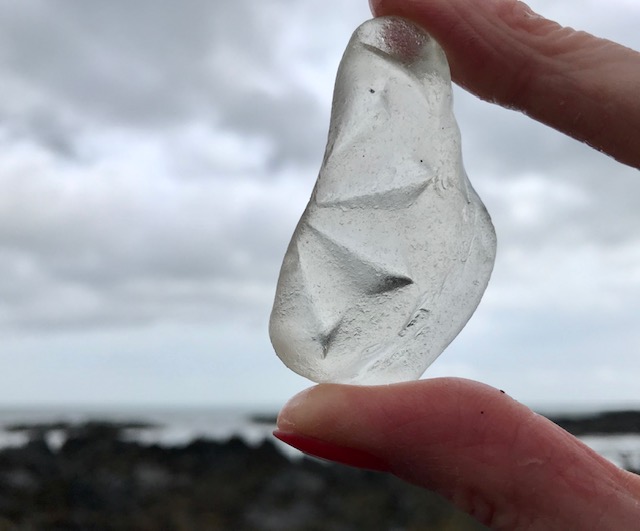
Physical activity is often an effective, tangible way you can help to support your mental health. Science has proven its benefits, and from stress-busting and tension control to boosting your mood, exercise is good for you, all round.
And at Christmas, when the stresses of the season can often overwhelm us, it’s a great idea to take a break and get out into the fresh air to drink in its invigorating goodness.
Whether you prefer walking, running, cycling, swimming or even armchair aerobics, there are myriad ways to keep active, even if your mobility is restricted.
AMH’s Aileen McClenaghan is among those of us who likes to get active doing something a little bit different – beachcombing!
Beachcombing – which involves scouring the beach side and surrounding area for its natural inhabitants and the flotsam and jetsam that gathers along and around the waterline – is one way Aileen keeps her body active and her mind invigorated.

Aileen writes a regular blog and here in excerpts below, she explains what it is about beachcombing that has her returning to the shoreline again and again.
“It’s great to get out in nature, it’s good for our mood, our immune system and for our fitness. Being by the sea energises me. It shakes off any tiredness, invigorates my senses and quietens my mind. I can wake up early and head straight to the beach, for a pre-work walk, I can take a more leisurely ramble along the coastal path of an evening, or I can be out by the sea anytime in between. I love looking at the natural light, the colours, the cloud formations.
“I walk, I breathe in the fresh air and I look around me. I see things which belong, and things which don’t. My eyes have become accustomed to spotting the unusual amongst the familiar colours and shapes of our shores. I started noticing sea-glass pebbles; small pieces of glass, smoothed and shaped by decades in the sea. Then, I would find ceramic pieces, also smoothed by the tumbling seas. I became fascinated by the beauty of these imposters and there began my beachcombing in earnest.

“I use sea-glass and sea-pottery creatively; mostly making pictures of people and animals. Sometimes, I can pick up a piece of sea-glass and be sure it’s a head, or a pottery piece and know it will be a dress. Porcelain cup handles become dogs’ tails, clay pipe stems become trousers, bottle necks become lighthouses. The sea has allowed me to be creative and has provided me with tides of jigsaw pieces. Each piece is unique. I love the thrill of finding vintage and rare sea glass & pottery, researching the history, if I can. I know that turquoise glass is rarer than cobalt blue, that black glass is rarely black… and if it’s blackcurrant black, then that’s treasure! Red seaglass sometimes comes from ships’ lights, pink sea glass often comes from cheap dinnerware, mass-produced during the Great Depression era. I’ve found sea-smoothed ceramic fragments of Hartley’s marmalade jars from the Aintree factory, pre- WW1 telegraph pole ceramic insulators, Victorian bottle stoppers, Codd marbles and Cornishware-range pottery, which I remember from my great-grandmother’s tableware. It’s fascinating stuff.

“In the strangest year we’ve possibly had, connecting with nature can help shore up our mental health. No pun intended. Remember when two orcas came up into Strangford Lough? Nature thrives when human activity slows down and the appearance of these orcas was precisely at a time when we couldn’t leave the house, except to exercise. Collectively there was a real buzz of excitement. We wanted to protect them, to help them with safe passage back out into deeper waters and maybe to find out a bit more about these two bulls and their back-story.
“Connections with our seas don’t need to be so grand though. There’s probably a collective noun for beachcombers. Maybe a neckache of beachcombers, or a wave of. Undeniably, there’s a huge element of mindfulness in beachcombing and being by the sea. You are outside and connected with nature; feeling the weather, listening, looking and focusing on one task, without distractions if you’re lucky. No two days by the sea are the same and it’s never tedious. See you at the beach.
You can read the full blog here: https://www.facebook.com/WhatTheSeaSaw